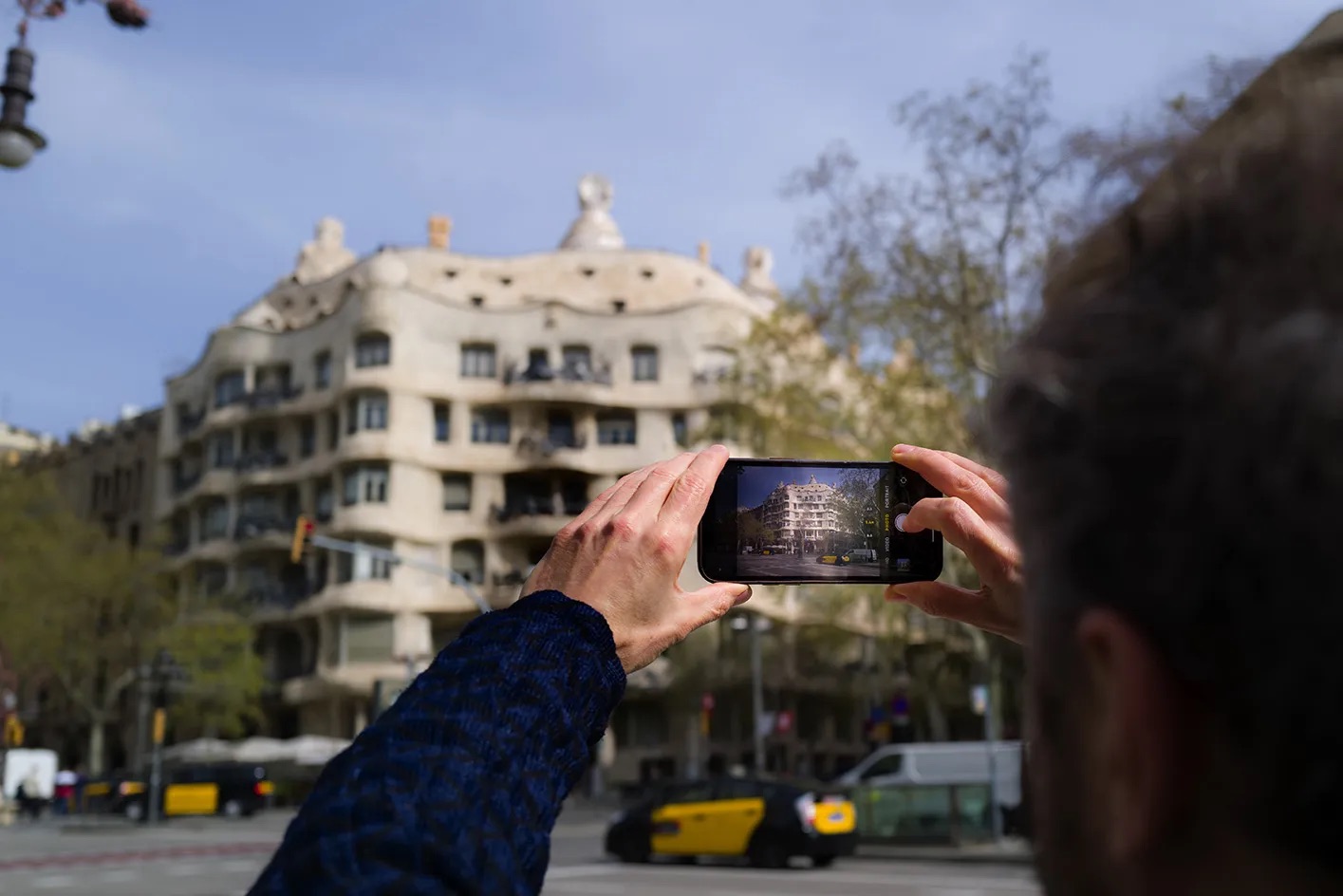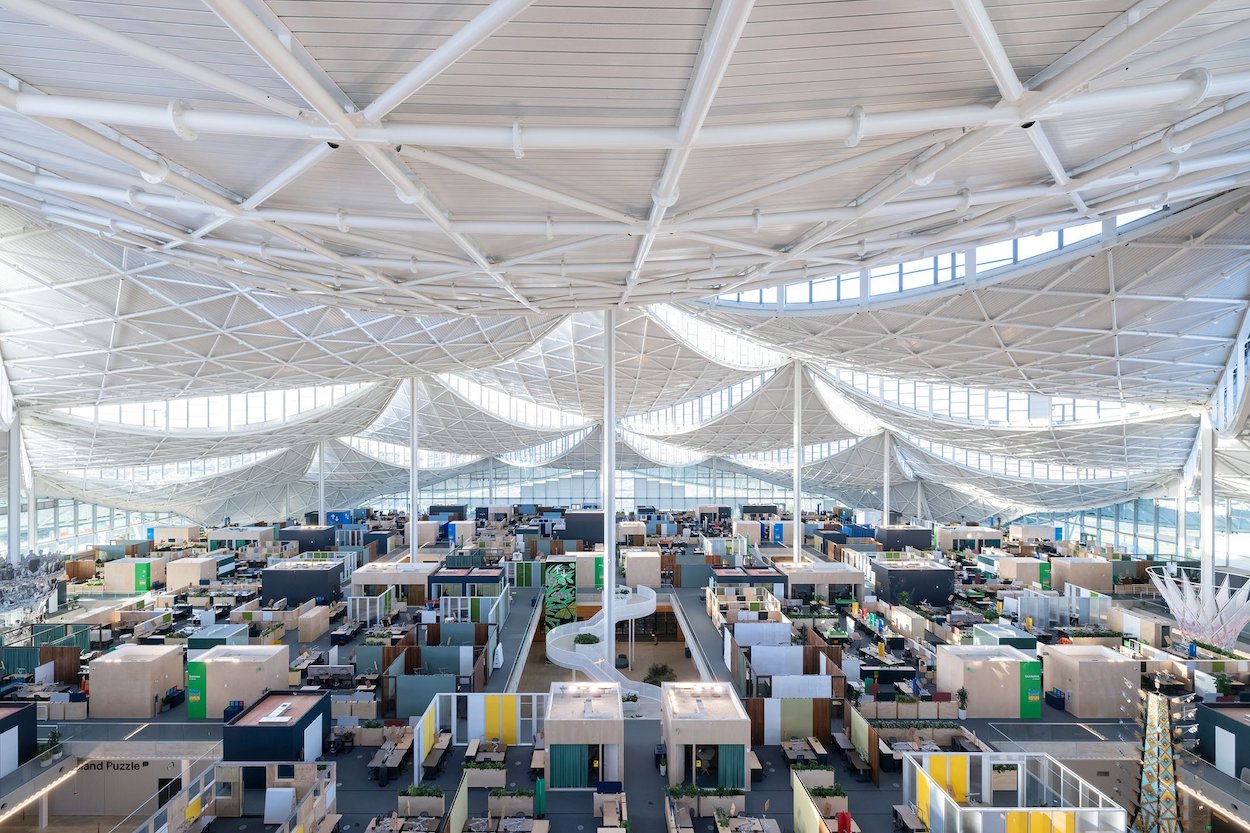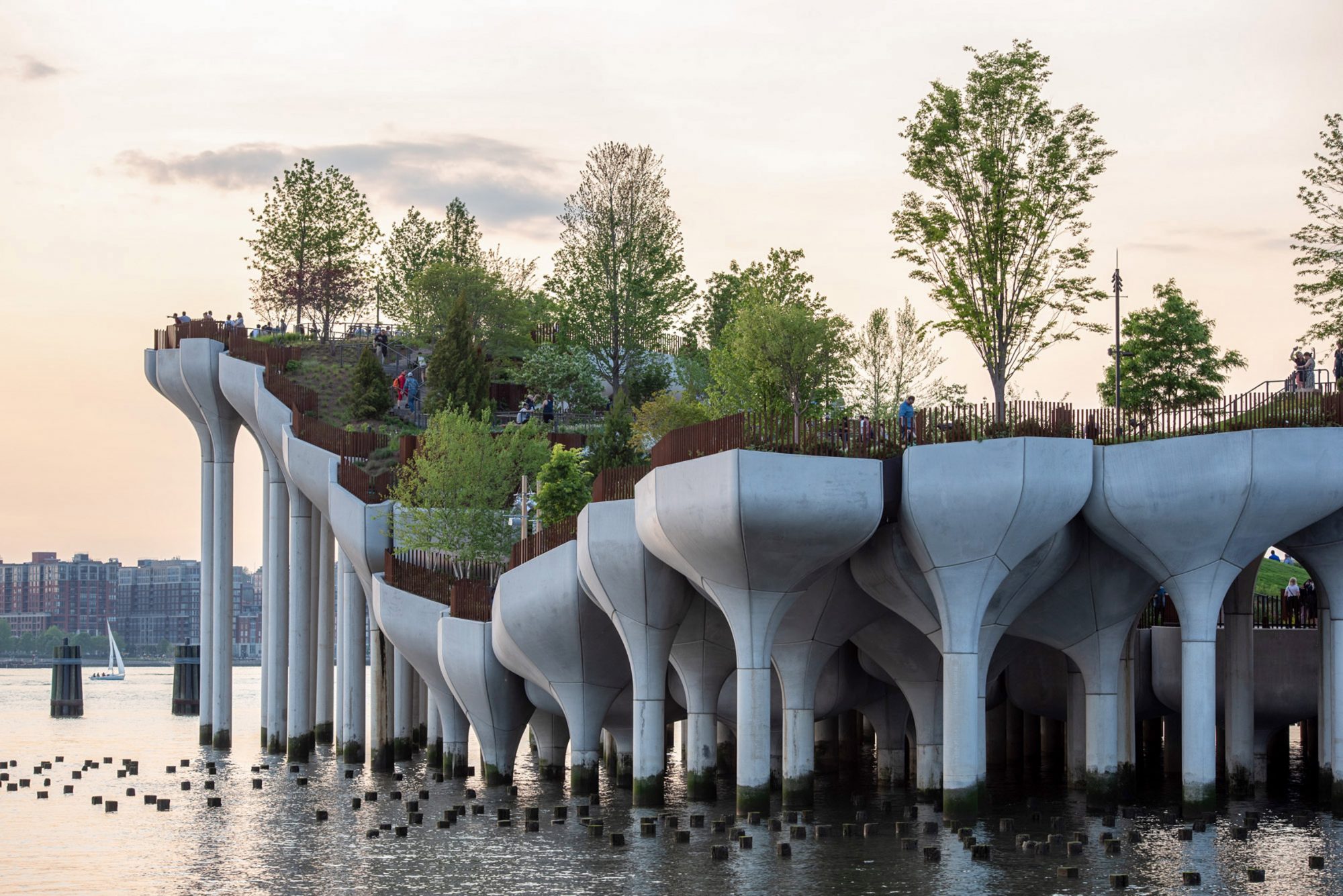Thomas Heatherwick’s latest book is less a shiny monograph and more a passionate screed. Humanise, published last week through Penguin, argues that humdrum architecture starves the soul. “We’re living through a quiet, global catastrophe of boring buildings that make us sick, stressed, and depressed, while simultaneously destroying our planet,” the book’s website reads. Blaming the profusion of stolid structures on a cult of architects brainwashed by modernist orthodoxy, Heatherwick simply argues for a return to joy. For reference, see his firm’s work on Google’s tented Bay View campus, Manhattan’s Instagrammable Little Island park, and Tokyo’s sloping Azabudai Hills development.
Where did architecture’s dance with joylessness come from? The book blames Le Corbusier for convincing a generation of designers to see “beauty in the mind-numbingly boring” and giving birth to a clean-lined, flat-surfaced aesthetic that promised streamlined, sanitary spaces for a world cratered by World War II. Though it was hardly perfect, the movement delivered and continues to inspire swaths of buildings that, Heatherwick argues, are too flat, plain, and anonymous. He has a point, though perhaps it has already been hammered down by Robert Venturi, Antoni Gaudí, and Tom Wolfe. Most new builds in Manhattan are glass-skinned luxury condos and soulless office towers adorned with just enough half-hearted ornamentation and reflective surfacing to ensure they don’t massacre birds. But rarely do they captivate like the Chrysler Building or Grand Central Terminal.
Beauty may be in the eye of the beholder, but money makes the world go ‘round. The beauty championed by Heatherwick often gets jettisoned by developers late in the design process to shave costs and boost profits. It’s not like most architects have room to experiment in the first place—they’re often beholden to strict safety codes and zoning regulations that make any aberrations cost-prohibitive, save for the scant one-offs that garner the most media attention. What remains can feel dull and uninspiring, but as Justin Davidson writes in Curbed, “not every home in 17th-century Agra was the Taj Mahal.” The ideal way forward, Heatherwick argues, is for architects to embrace emotion. His firm developed a “boringometer,” a software tool measuring the visual complexity of architecture based on human responses: frowns, muscles flinching, eyes dilating. Whether it can save him from himself remains to be seen.



